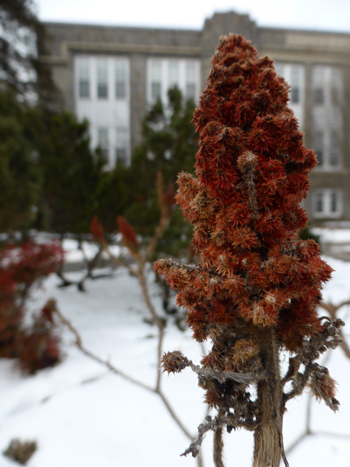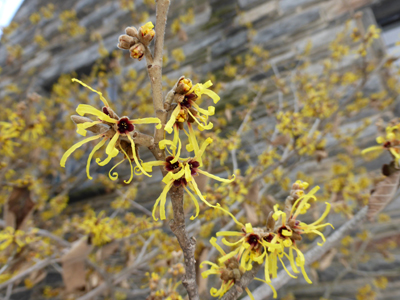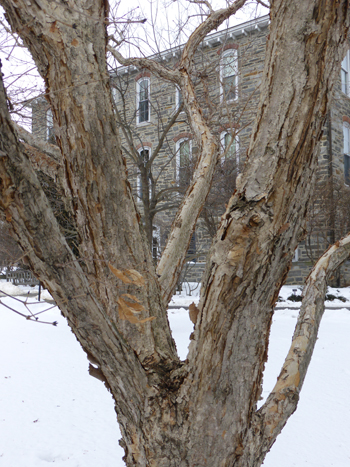Plants of the Week: January 27
 Vigorous and adaptable staghorn sumac, Rhus typhina, can be found from southern Canada south to Georgia and Iowa where it forms suckering colonies. Flowers appear in June and July followed by clusters of red drupes arranged on a conical panicle. Fruit persists throughout the winter. The dissected foliage of cultivar Tiger Eyes® emerges bronze yellow then transitions throughout the growing season to yellow, yellow-green, and finally orange-red in autumn. Tiger Eyes® matures at 5’ to 10’ in height and is slower growing than the species. Photo credit: J. Coceano
Vigorous and adaptable staghorn sumac, Rhus typhina, can be found from southern Canada south to Georgia and Iowa where it forms suckering colonies. Flowers appear in June and July followed by clusters of red drupes arranged on a conical panicle. Fruit persists throughout the winter. The dissected foliage of cultivar Tiger Eyes® emerges bronze yellow then transitions throughout the growing season to yellow, yellow-green, and finally orange-red in autumn. Tiger Eyes® matures at 5’ to 10’ in height and is slower growing than the species. Photo credit: J. Coceano
Garden location: Nason Garden
 Hamamelis mollis ‘Early Bright’ refuses to let the freezing cold of winter delay it from flowering. Each flower bud opens to reveal four slightly twisted flower petals. Depending on temperature, the petals may be curled tight against the bud or fully extended. Jessica Ahrweiler, sales representative and marketing coordinator at Waverly Farms and 2012 summer intern, wrote Winter Wonders: How and Why Plants Flower in Winter in an attempt to discover why certain plants flower in winter. Such plants are guided by several internal processes including circadian rhythm, photoperiodism, and vernalization. Another advantage to blooming in winter is that competition for pollinators is low. Available pollinators are more apt to pollinate these early bloomers, resulting in high reproductive rewards for the witchhazel. Photo credit: J. Coceano
Hamamelis mollis ‘Early Bright’ refuses to let the freezing cold of winter delay it from flowering. Each flower bud opens to reveal four slightly twisted flower petals. Depending on temperature, the petals may be curled tight against the bud or fully extended. Jessica Ahrweiler, sales representative and marketing coordinator at Waverly Farms and 2012 summer intern, wrote Winter Wonders: How and Why Plants Flower in Winter in an attempt to discover why certain plants flower in winter. Such plants are guided by several internal processes including circadian rhythm, photoperiodism, and vernalization. Another advantage to blooming in winter is that competition for pollinators is low. Available pollinators are more apt to pollinate these early bloomers, resulting in high reproductive rewards for the witchhazel. Photo credit: J. Coceano
Garden location: Several plants on campus: specimen close to the Cherry Border, within the Fragrance Garden, and near the Women’s Resource Center
 Snowfall provides a perfect backdrop. Every bud, stem, and bark detail is heightened. Such a white background caused me to stop and admire Acer triflorum. The Missouri Botanic Garden notes attractive shape, exfoliating bark, and fall color as the top attributes of Acer triflorum. The small tree is easy to grow and bears a similar habit to Acer griseum. Photo credit: J. Coceano
Snowfall provides a perfect backdrop. Every bud, stem, and bark detail is heightened. Such a white background caused me to stop and admire Acer triflorum. The Missouri Botanic Garden notes attractive shape, exfoliating bark, and fall color as the top attributes of Acer triflorum. The small tree is easy to grow and bears a similar habit to Acer griseum. Photo credit: J. Coceano
Garden Location: specimen between Trotter and Kohlberg Hall





No Comments